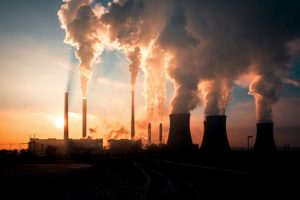Europe steps up the pace of its shift away from fossil fuels
Reducing carbon emissions seems to be on the top of everybody’s agenda at the moment.
A recent post in The New York Times reports on proposals being discussed in the European Union to drive the region’s pivot away from fossil fuels over the next nine years.
Receive the latest short-term and long-term outlook for the full range of industrial metals (base and ferrous) at the annual MetalMiner Forecasting Workshop on Aug. 25.
Tariffs for exporters with weaker carbon emissions regulations
According to the report, the most radical and possibly contentious proposal would impose tariffs on certain imports from countries with less-stringent climate protection rules.
The proposals would also include eliminating the sales of new petrol- and diesel-powered cars in just 14 years. They also call for a 55% reduction in greenhouse gas emissions by 2030 (compared with 1990 levels).
According to The New York Times, at the heart of the European road map is increased prices for carbon.
Nearly every sector of the economy would have to pay a price for the emissions it produces. In turn, that would affect things like cement in construction and fuel for cruise ships.
Proposed tariffs on imports of goods made outside the European Union, in countries with less-stringent climate policies, could invite disputes at the World Trade Organization. The cross-border carbon tax proposal could have the greatest impact on goods from Russia and Turkey, mainly iron, steel and aluminum.
We covered that topic recently following howls of protest by European steel and aluminum producers that overseas supplier could simply direct low-carbon production to Europe and sell their higher-carbon content production elsewhere. That would leave a net-zero reduction in global carbon emissions. Furthermore, it would damage European manufacturers’ home markets by allowing in low-tariff imports from producers they deem to be cheating the system.
The US perspective
The good news for U.S. exports to Europe is any impact would be far smaller.
Little in the way of raw material is shipped from the U.S. to the E.U.
Anyway, Democrats are looking at a similar tax, termed the “polluters tax” intended to have a similar impact.
The proposals, if passed, would see the last gasoline or diesel cars sold in the European Union by 2035. According to the post, they would require that 38.5% of all energy be from renewables by 2030. The proposals also call for a significant increase in the price charged for carbon emitted to make the use of fossil fuels increasingly expensive.
Role of China
China is the world’s largest polluter. However, it faces some unique challenges.
Its power generation industry is one of the youngest among major economies, with numerous new power stations coming onstream every month. To switch from that overwhelmingly coal-based capacity would entail eye-watering capital losses.
Ahead of the upcoming Glasgow-hosted COP-26 climate talks later this year, China has just announced it will launch its long-awaited carbon market. According to The New York Times, it would be the world’s largest by volume of emissions.
As with all carbon markets, though, its efficacy will in part be down to how generous Beijing’s get- out-of-jail-free cards it issues to polluters in the form of carbon credits.
Nonetheless, it would be a start.
Political process
Politically, this has some way to go.
It is estimated it will take two years for the European Union’s policies to be debated, negotiated and finally agreed across the E.U.’s 27 national governments and with Brussels.
Views differ widely as to priorities. Some countries, like Denmark, are already well on the way in the process of a huge switch to renewables. Others, like Poland and Germany, still rely heavily on coal for power generation. Hence, their industrial base would face substantial implications — unless carbon credits were so generous they would make the proposals meaningless.
Someone has to pay for such a colossal shift. It is always, in the end, the consumer.
Politicians at the local level are well aware of this and will to varying degrees look to push the consequences as far into the future as possible — if not for when they are no longer in power then at least when they are in different ministerial roles. Then, it’s someone else’s problem.
All the same, the flow of history is clear. Where governments fail, the market may well lead. Many firms, from automakers to electronics, are already seeing marketing opportunities in zero-carbon products. Those firms are shifting supply chains to be able to deliver that claim to market.
Politicians’ rhetoric on the issue is widely supported by the majority of the public (at least in Europe).
But that may change as the costs begin to bite.
Join the MetalMiner LinkedIn group today for daily news and content.



Leave a Reply